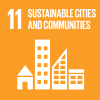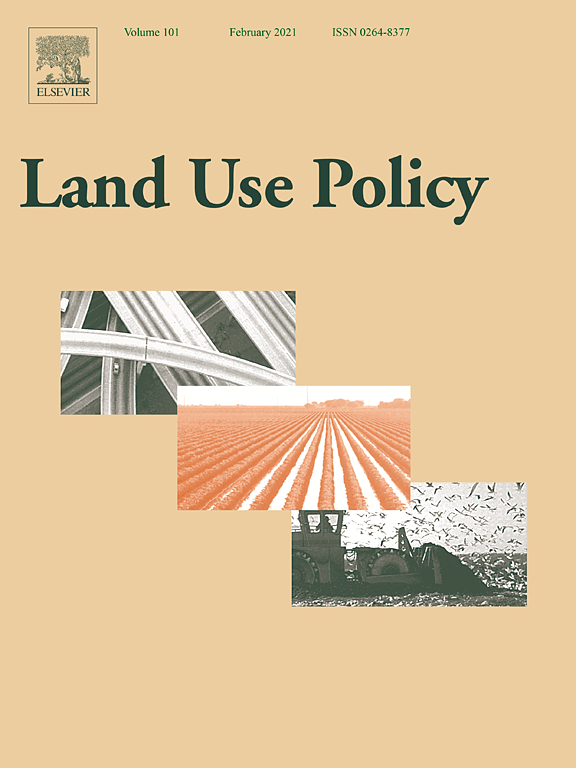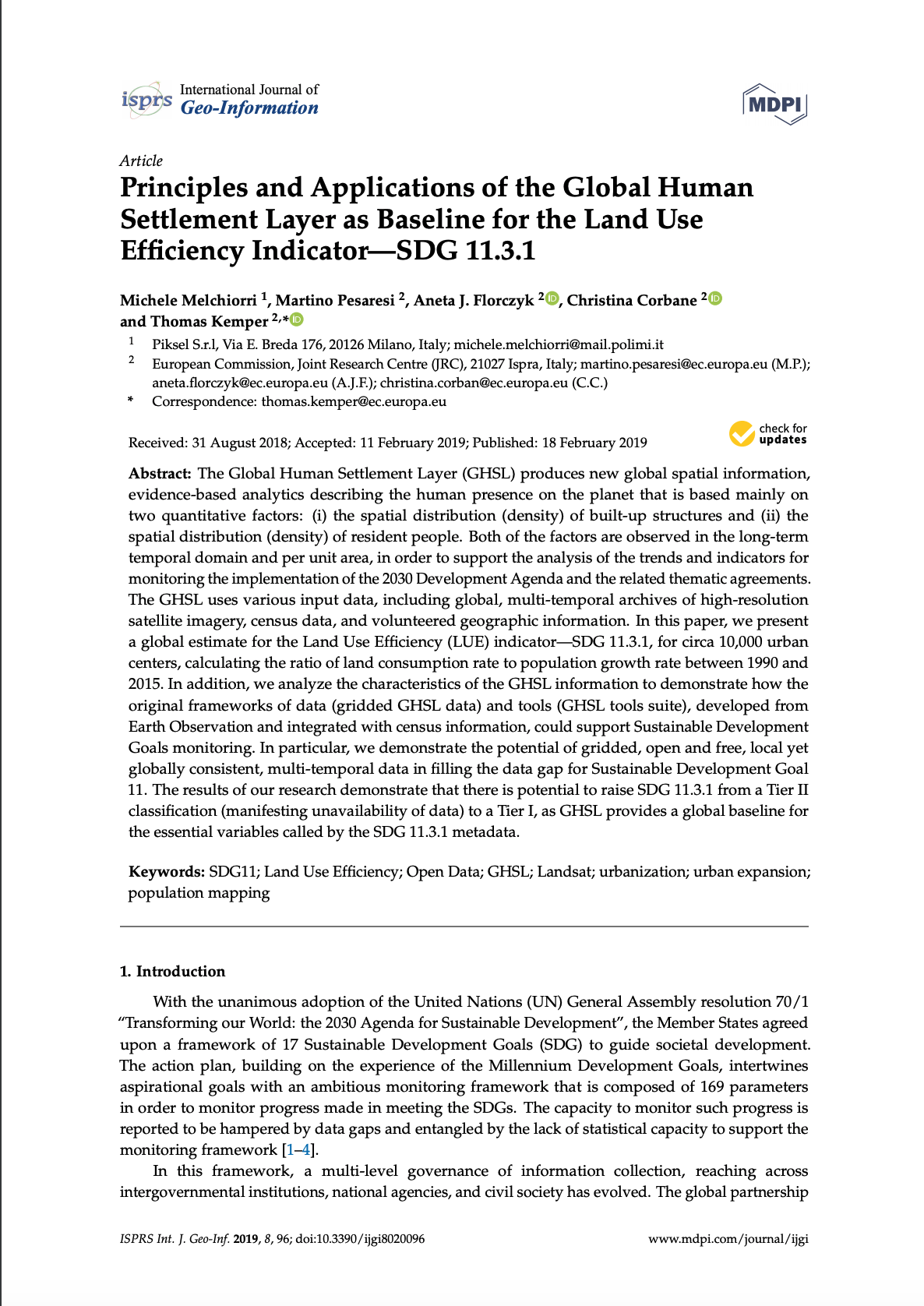
Ratio of land consumption rate to population growth rate
Last updated on 1 February 2022
This indicator is currently classified as Tier II. The United Nations Human Settlements Programme (UN-Habitat).
Unit of measure: The unitless indicator is measured as a ratio of the consumption rate (%) and population growth rate (%).
Why is this indicator important?
Urban areas are expected to grow considerably in the coming years. Many cities around the world have vast urban expansion plans. Urban sprawl can increase CO2 emissions and pose a threat to people and the planet. High rates of urban densification without adequate provision of infrastructure also results in diverse urban challenges. Urban expansion needs to be done efficiently and inclusively to ensure sustainable land use and management.
This indicator allows decision makers to track and manage urban growth and therefore allows them to promote land use efficiency in this context. In sum, it ensures that the SDGs adequately address the wider dimensions of space and land and provides a foundation for achieving other sustainable development goals, including those pertaining to health, food security, energy and climate change.
How is the indicator measured and monitored?
Several sources of information are required for the indicator computation, including multi-temporal satellite imagery through remote sensing and geospatial analysis processes as well as population data from censuses and surveys. Data for developed urban land is usually available from the urban planning units of cities and, where lacking, can be generated from openly and freely available satellite imagery.
Within the defined city/ urban area boundaries, the changes in built up areas over time are used to estimate the land consumption rate. The use of this measure accounts for aspects such as “newly developed”, "partially developed” and/or “redeveloped” land. According to the metadata document, defining the city or urban area poses a challenge since quite often land consumption through urbanization processes happen outside official municipality boundaries. The interpretation of the results is limited in cases with negative or zero growth. In addition, multiple city aggregations may lead to wrong interpretations.
By Anne Hennings, peer-reviewed by Dennis Mwaniki, Spatial Data Expert at UN-Habitat’s Data and Analytics Unit.
Other related indicators on Land Portal
In addition to the official indicator data, the following indicators provide information on urban expansion and related land use planning questions.
| Indicator | Min-Max Number of years |
Countries / Obs | Min / Max Value |
|---|---|---|---|
| Land use planning guides expansion in other cities | |||
| Land use planning guides expansion in the largest city | |||
| Population growth | |||
| Process for urban expansion clear, public, respects rights | |||
| Urban Population |
El actualizado SDG Tracker (rastreador de los ODS) ayuda a navegar por la maraña de datos e información sobre la tierra
Más de una docena de indicadores relacionados con la tierra se encuentran en cinco objetivos de los ODS, con datos mantenidos por diferentes organismos de custodia. El Land Portal relanzó el SDG Land Tracker (Rastreador de los ODS sobre Tierra) para ayudar a las partes interesadas en la tierra a supervisar los avances y el debate.
Updated SDG tracker helps navigate the jumble of land data and information
More than a dozen land-related indicators are housed over five SDG goals, with data maintained by different custodian agencies. The Land Portal re-launched the SDG Land Tracker to help land stakeholders monitor developments and discussion.
Asia-Pacific Off Track: 20% of SDG Indicators Predicted to be Worse in 2030
By Catherine Benson Wahlén, Thematic Expert for Human Development, Human Settlements and Sustainable Development (US)
Upgrade slums, expand rentals to ease urban housing crisis - researchers
"We think it's a crisis when one-in-three households - one-in-three citizens that live in cities - don't have adequate, secure or affordable housing"
TEPIC, Mexico, July 12 (Thomson Reuters Foundation) - Booming cities in developing nations should upgrade slums, build on underused land and promote rental choice to tackle a fast-growing crisis caused by a shortage of affordable housing, researchers said on Wednesday.
Paginación
- Page 1
- Next page next ›
Metadata on SDG Indicator 11.3.1
Indicator 11.3.1: Ratio of land consumption rate to population growth rate
Does Urban planning affect urban growth pattern? A case study of Shenzhen, China
It is essential to understand how urban plans affect urban growth patterns in order to improve current urban planning and management systems. Few studies have been conducted to analyse urban growth patterns of Shenzhen, an international megacity located in southern China, but none of them revealed the relationships between urban planning and urban growth patterns.
Detecting the Dynamics of Urban Growth in Africa Using DMSP/OLS Nighttime Light Data
Africa has been experiencing a rapid urbanization process, which may lead to an increase in unsustainable land use and urban poverty. Assessing the spatiotemporal characteristics of urbanization dynamics is especially important and needed for the sustainable development of Africa.
Best Practices in Data Flows and Global Data Reporting for the Sustainable Development Goals
The Inter-Agency and Expert Group on Sustainable Development Goal Indicators (IAEG-SDGs) was tasked by the United Nations Statistical Commission (UNSC) in its 50th session to “work jointly with custodian agencies and establish a fruitful dialogue between all parties, to further refine the guidelines by taking into account concerns raised at the forty-ninth session of the commission and to prepa
Principles and Applications of the Global Human Settlement Layer as Baseline for the Land Use Efficiency Indicator—SDG 11.3.1
The Global Human Settlement Layer (GHSL) produces new global spatial information, evidence-based analytics describing the human presence on the planet that is based mainly on two quantitative factors: (i) the spatial distribution (density) of built-up structures and (ii) the spatial distribution (density) of resident people.
Paginación
![]()

By 2030, enhance inclusive and sustainable urbanization and capacity for participatory, integrated and sustainable human settlement planning and management in all countries
Indicator details
The indicator is conceptually clear, has an internationally established methodology and standards are available, but data is not regularly produced by countries.
Key dates:









